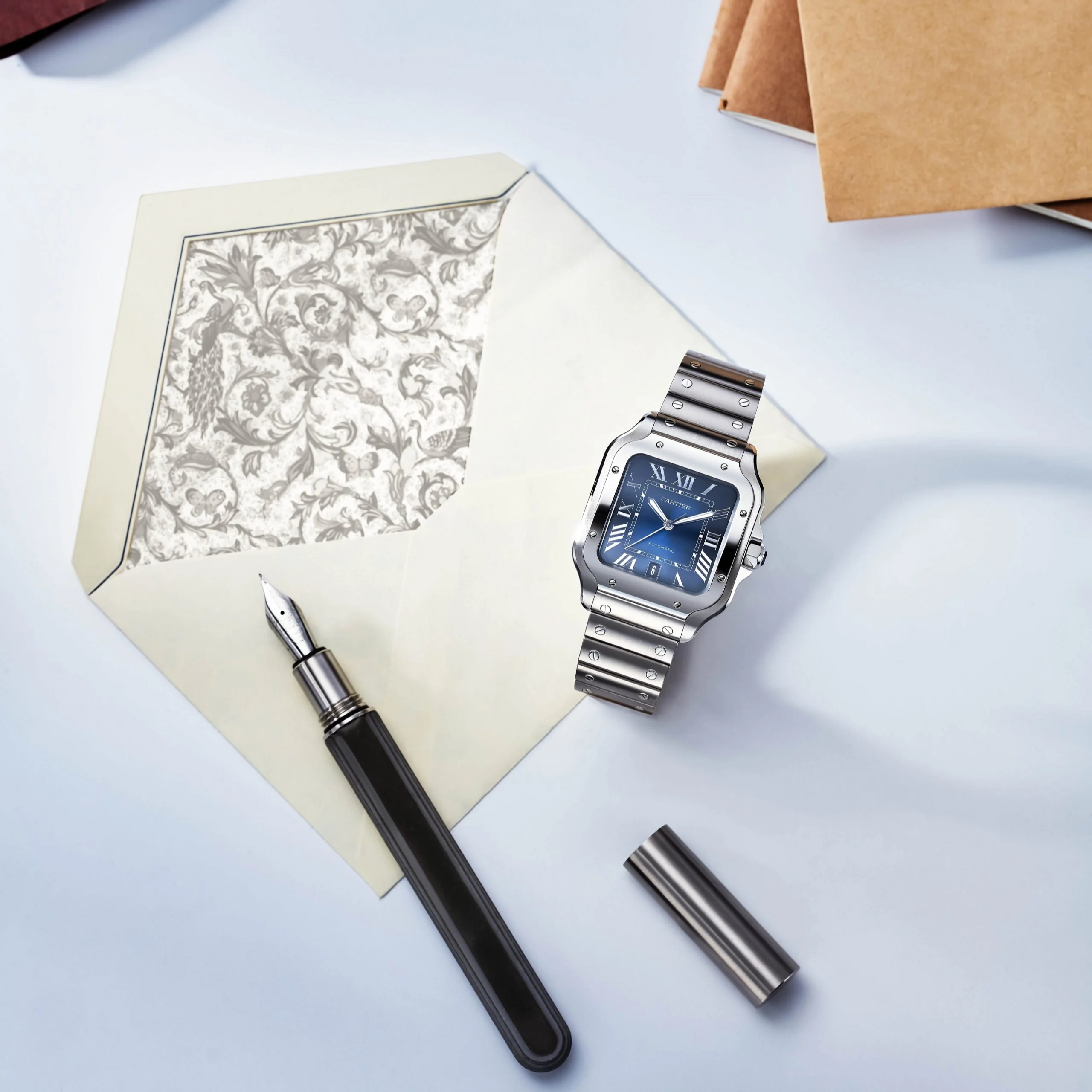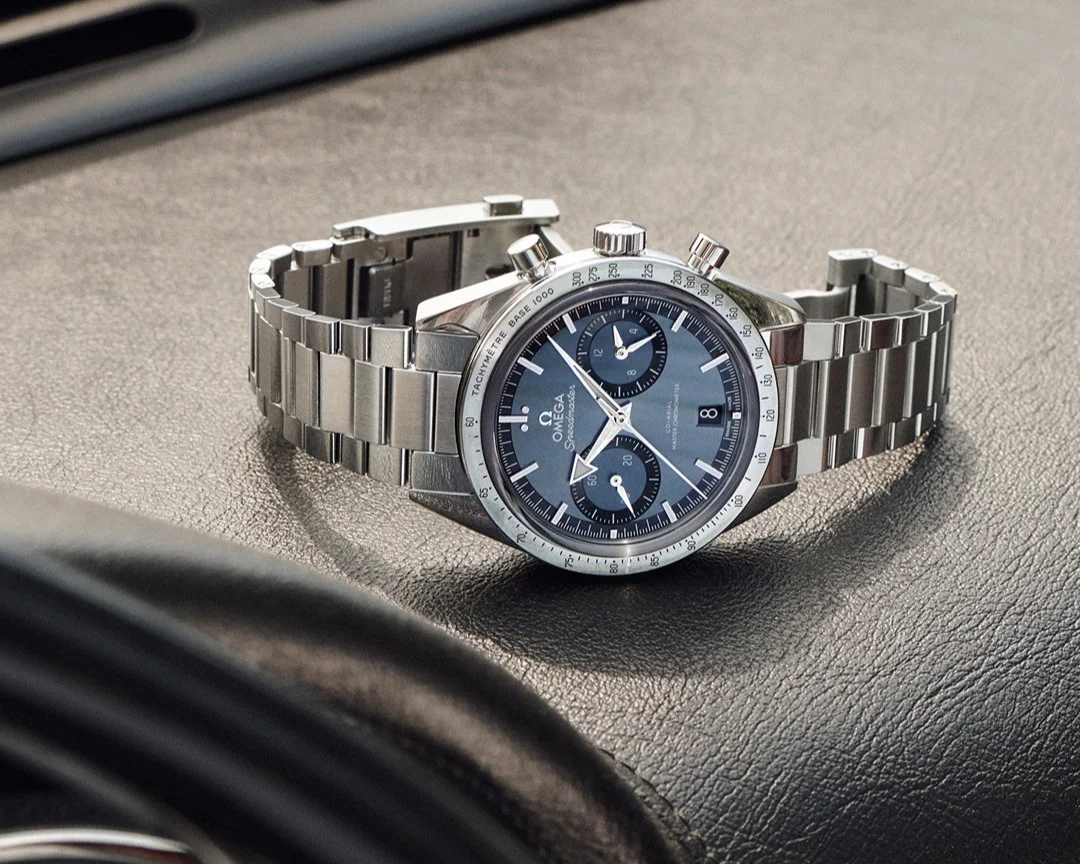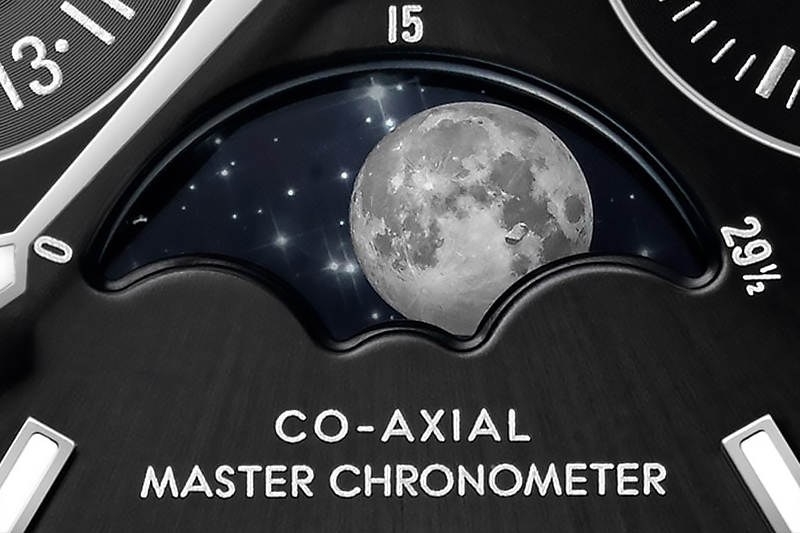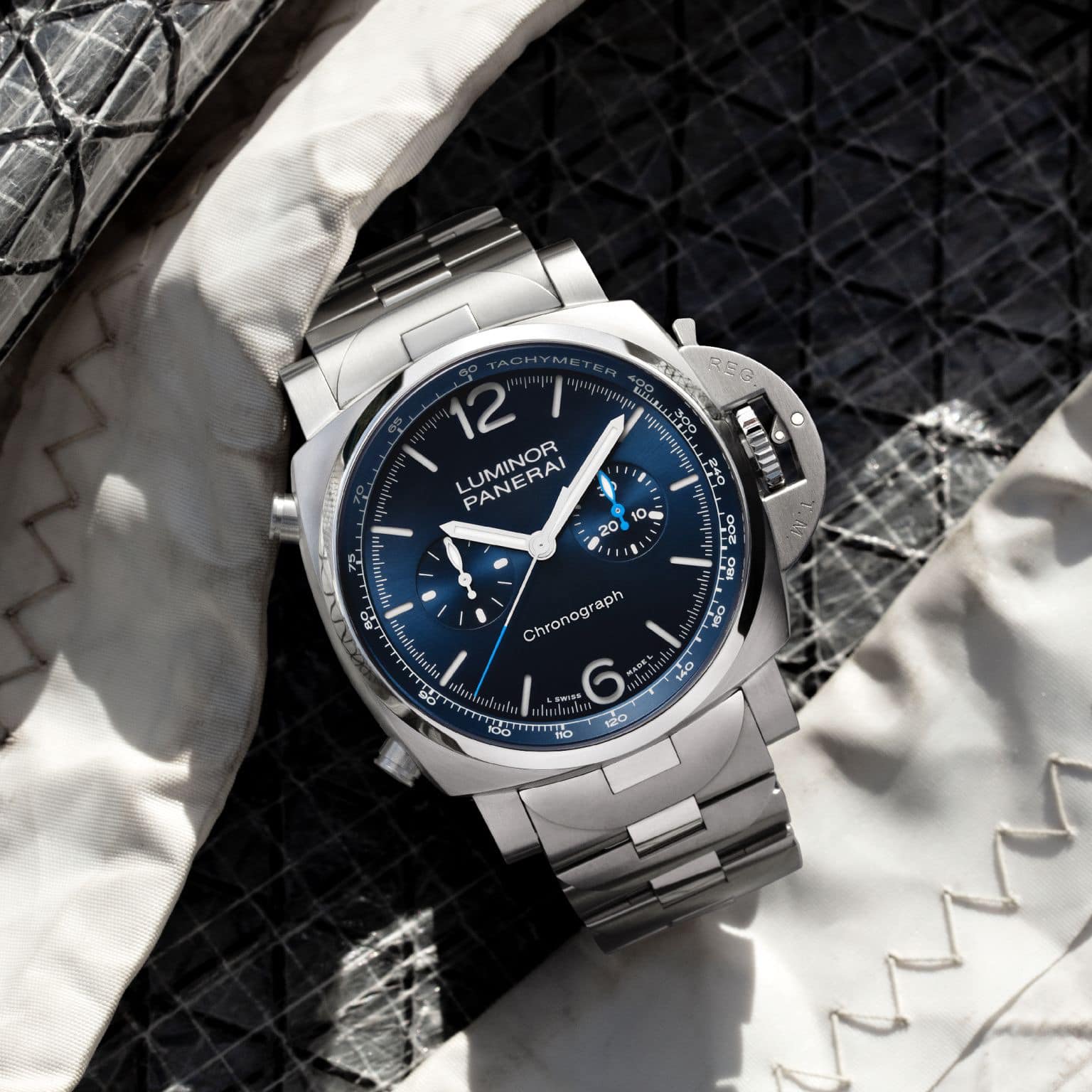
To fully recount OMEGA’s history would require about 20,000 words. For those new to OMEGA, there are a few key facts to know. Since 1932, OMEGA has been the official timekeeper and major sponsor of the Olympic Games. In 1969, the OMEGA Speedmaster accompanied astronaut Buzz Aldrin to the moon, witnessing one of humanity’s greatest moments. In 2019, the OMEGA Seamaster descended with explorer Victor Vescovo into the Mariana Trench, setting a world record depth of 10,928 meters. Even James Bond relies on OMEGA for his missions.

Precision is OMEGA’s most crucial DNA. In 1999, Dr. George Daniels created the “Co-Axial escapement” for OMEGA, significantly enhancing the durability of traditional mechanical watches. In 2014, OMEGA collaborated with the Swiss Federal Institute of Metrology (METAS) to establish the Master Chronometer certification, with a daily precision of 0/+5 seconds and magnetic resistance up to 15,000 gauss, surpassing the COSC Swiss chronometer standards.
Exploring OMEGA’s timepieces is akin to watching a grand historical drama from Japan’s NHK or reading Proust’s 2-million-word “In Search of Lost Time” – a journey through time with distinct characters, surprises, intrigue, and plot twists. While it takes time to fully appreciate, each chapter leaves a lasting impression. If someone asks about your OMEGA watch, invite them for coffee or open a fine bottle of wine: “Let’s sit down and talk, this watch has a story to tell…”

Seamaster: A Historic Family
Among OMEGA’s many watch lines, the Seamaster series, born in 1948, is the oldest and largest family. In fact, as early as 1932, OMEGA had developed its first water-resistant watch, the Marine CK 679, which used a double-case design and reached a record depth of 135 meters. In an era when watches would easily fog up, water resistance beyond 100 meters was unimaginable to most people.
In 1948, the first generation of Seamaster introduced the small three-hand CK 2518 and the large three-hand CK 2577, with water resistance up to 60 meters. Strictly speaking, these were not yet true diving watches. However, they featured a screw-in caseback, Naiad water-resistant crown, and pioneered the use of rubber gaskets later known as “O-Rings,” marking a milestone in the development of water-resistant technology.

The Seamaster officially became a diving watch in 1957. That year, OMEGA launched its “Professional Tool Watch Trilogy”: the Speedmaster, Railmaster, and Seamaster 300. Despite its name, the Seamaster 300’s water resistance was actually 200 meters, as measuring instruments at the time could only test up to that depth. Nevertheless, the Seamaster 300 already had the prototype features of modern professional diving watches, such as a bidirectional rotating bezel and luminous hour markers. In 1993, another “Seamaster 300m” Professional Diver was introduced, adding a manual helium escape valve, becoming one of the most popular professional diving watches of the contemporary era.
The Chinese translation of Seamaster as ” sea horse ” not only plays on the phonetic similarity of “master”, but also relates to the seahorse engraving on the caseback, inspired by the Hippocampus from Roman mythology, which pulled Neptune’s chariot. The seahorse motif first appeared on the CK 2975 in 1958. Images of Neptune and his seahorse chariot have also appeared on enamel-painted dials of vintage OMEGA watches.

How to choose from so many Seamaster options?
For those who love vintage classics, the Seamaster 300 revived in 2017 is a great choice. It pays homage to the 1957 original design, now featuring a ceramic bezel and liquid metal scale. The water resistance has been increased to a genuine 300 meters, and it has a transparent caseback showcasing the 8400 Co-Axial movement. There’s also the uniquely designed Bullhead chronograph, created in 1969 specifically for rally drivers. With its shield-shaped case and chronograph pushers and crown positioned at 12 o’clock, it’s arguably the most unconventional member of the Seamaster family.
If diving performance is your priority, the Seamaster series offers options ranging from the entry-level Professional Diver 300m, to the professional-grade Planet Ocean 600m, the deep-diving Ploprof 1200m, and the unfathomable Ultra Deep 6000m, meeting the needs of various divers. The Seamaster Diver 300m and Planet Ocean 600m are OMEGA’s best-selling flagship dive watches. Besides the difference in water resistance, the three-hand models have diameters of 42mm and 43.5mm respectively, with chronograph versions also available.

Among current commercial dive watches, the OMEGA Seamaster Ultra Deep boasts the highest water resistance at 6000 meters. To prove OMEGA’s water resistance technology, when launching the Ultra Deep in 2019, OMEGA collaborated with explorer Victor Vescovo. Using the submersible “Limiting Factor,” they reached the deepest point of the Mariana Trench, setting a new world record of 10,928 meters. For most people, even 600 meters is an unreachable depth, let alone 6000 meters. However, challenging the impossible is part of OMEGA’s DNA.
For those who prioritize style and fashion, the Seamaster Aqua Terra is a versatile choice suitable for both active and formal occasions. Its dial design is inspired by yacht deck patterns, with a diameter of 41mm and water resistance to 150 meters. Its size is more manageable, and besides the standard three-hand models, the world time function watch with laser-engraved dial is also a popular choice. Additionally, the Seamaster James Bond limited editions combine cinematic themes with 007’s debonair charm, their limited availability also enhancing their collectible value.

Speedmaster: The Racing Watch that Conquered Space
The OMEGA Speedmaster Moonwatch is one of the most celebrated chapters in horological history. However, the first-generation Speedmaster CK 2915, born in 1957, was originally designed as a chronograph for motorsports. Its chronograph pushers and three sub-dials were used to record all types of speed events, including car racing. The bezel featured a Tachymeter scale for calculating speed per kilometer. This design wasn’t unique to OMEGA; many racing watches in the 1960s and 70s featured similar functionality.
Before its lunar mission, the Speedmaster had already reached for the stars, becoming the first wristwatch in space in 1962. At that time, NASA hadn’t specified any particular watch model. Astronaut Wally Schirra wore his personal second-generation Speedmaster CK2998 during the Mercury Program’s “Sigma 7 Mission,” completing 6 orbits around Earth in 9 hours, 13 minutes, and 11 seconds.

In 1963, NASA selected various brands from the market for a series of rigorous tests. The third-generation Speedmaster ST 105-003 emerged victorious, becoming one of NASA’s officially designated equipment for space missions. It subsequently participated in numerous missions including Gemini and Apollo programs. Most notably, in 1969, the Speedmaster accompanied astronaut Buzz Aldrin on the Apollo 11 mission, witnessing humanity’s first steps on the moon. From then on, the “Moonwatch” became world-renowned. To commemorate the Moonwatch’s 50th anniversary in 2019, OMEGA developed the new generation 3861 movement and the proprietary “Moonshine Gold” alloy, adding another brilliant chapter to this historic legacy.

In 1970, during the Apollo 13 mission, when an explosion caused the spacecraft to veer off course, the OMEGA Speedmaster helped astronauts accurately time a crucial 14-second burn to correct their trajectory and safely return to Earth. For this, OMEGA received NASA’s “Silver Snoopy Award.” To honor this history, OMEGA released three Speedmaster Snoopy editions in 2003, 2015, and 2020. These watches, combining dramatic history with the beloved Snoopy character, have skyrocketed in value and popularity.
Additionally, the “Dark Side of the Moon” watch, launched in 2013, was themed around the Apollo 8 lunar orbit mission. It features a black ceramic case with the lunar surface laser-engraved on the movement, impressing with both its design and craftsmanship. This was later followed by the “Grey Side of the Moon” with grey ceramic and the “White Side of the Moon” with white ceramic, exemplifying a perfect blend of historical themes, movement artistry, and innovative materials.

The Allure of the Speedmaster as an Authentic Racing Watch
Returning to its essence as a racing sports watch, the Speedmaster’s design is inherently classic. Its three-sub-dial chronograph layout, coupled with a tachymeter bezel, has been an unbeatable combination since the 1960s. Particularly popular models include the “Panda dial” with its white face and black bezel, and the “Green on Gold” featuring a green dial with a Moonshine Gold case.
Additionally, there’s the Speedmaster ’57 series, which pays homage to the 1957 historical original. It features a classic two-sub-dial chronograph layout, measures 40.5mm in diameter, and houses a manual-winding movement, resulting in a slimmer profile. For those preferring a smaller size, especially suited for women, there’s the Speedmaster 38mm series. These watches combine elegance with intelligence, boasting vibrant colors. The diamond-set bezel versions are particularly eye-catching and charming.
Perhaps the most distinctive in design is the Speedmaster Chronoscope series, based on OMEGA’s chronographs from the 1940s. Beyond the classic two-sub-dial chronograph layout, it simultaneously features three scales: a tachymeter, a telemeter, and a pulsometer. This design preserves the original aesthetic of early chronographs while infusing it with a contemporary sensibility. Such a layout is relatively rare among modern chronographs.

Constellation Series: Evolving Designs, Unwavering Precision
For vintage watch enthusiasts, the OMEGA Constellation series is particularly intriguing. Each era of the Constellation features distinctly different design characteristics, ranging from automatic mechanical watches emphasizing precision performance to quartz watches focusing on fashionable appearances.
The first-generation Constellation, born in 1952, was an automatic winding watch certified by COSC (Swiss Official Chronometer Testing Institute). It had three distinctive features: a 12-sided “pie-pan” dial, a star emblem and “Constellation” text at 6 o’clock, and a solid caseback engraved with an observatory and 8 stars.
The stars represent eternal constancy, symbolizing the movement’s precision. This concept was revived in the 2015 Constellation Globemaster series, which recreated the original 1952 design. It also introduced the Master Chronometer certification, developed in collaboration with the Swiss Federal Institute of Metrology (METAS). This certification ensures a daily precision of 0/+5 seconds, magnetic resistance up to 15,000 gauss, and includes 8 rigorous tests covering power reserve and water resistance. The caseback features the same observatory and 8-star pattern as the 1952 model.

The Constellation‘s design underwent dramatic changes in the 1960s and 70s, eventually settling into its now-familiar form with the 1982 Constellation Manhattan series. This includes a barrel-shaped case with internal curves at the top and bottom, paired with a round bezel and dial. Two claws extend from each side of the case onto the dial, and the case and bracelet feature an integrated streamlined design. The entire watch is composed of soft curves, creating an elegant and fashionable aesthetic.
After comprehensive redesigns in 2009 and 2018, the modern Constellation series has become even more graceful, with a wider variety of styles. Sizes range from 24, 25, 27, and 29mm for women’s watches to 39 and 41mm for men. The women’s watches, in particular, have incorporated more decorative elements such as mother-of-pearl dials, diamond-set bezels, or diamond hour markers. The combination of precious metals and stainless steel in two-tone designs further accentuates the multi-layered case characteristic of the Constellation series.

De Ville: Urban Sophistication
Among OMEGA’s four major collections, the De Ville series, born in 1967, is the youngest and most progressive. “De Ville” means “of the town” in French, and its style is completely different from the sporty Seamaster or Speedmaster. The De Ville focuses on design aesthetics and has continuously evolved with changing fashion trends over the decades.
The De Ville collection includes several sub-series, each with distinctly different styles:
- De Ville Prestige: This elegant series combines round bezels, Roman numerals with domed or bar-shaped hour markers, and a seven-link bracelet. Its clean design exudes a sense of composed elegance.
- De Ville Hour Vision: This series adds more detailed layers to the dial and bracelet, such as three-dimensional hour markers and four-ring curves, enhancing the decorative features of a dress watch.
- De Ville Trésor: While appearing simple at first glance, the Trésor series actually offers a wide variety of dial designs. It uses different materials and crafting techniques such as mother-of-pearl, brass printing, and enamel dials, paired with slender bar-shaped or Roman numeral hour markers. The result is a watch with outstanding character and elegant charm.
- Ladymatic: Originally launched in 1955 as OMEGA’s first automatic women’s watch, the Ladymatic has in recent years been incorporated into the De Ville family, further enriching the variety of styles within the De Ville collection.

The De Ville series showcases OMEGA’s ability to create watches that are both contemporary and timeless, suitable for urban lifestyles and formal occasions. It demonstrates how OMEGA continues to innovate in design while maintaining its commitment to precision and quality craftsmanship.
Get up close with the dynamic and thrilling OMEGA at Cortina Watch today or discover more online.








